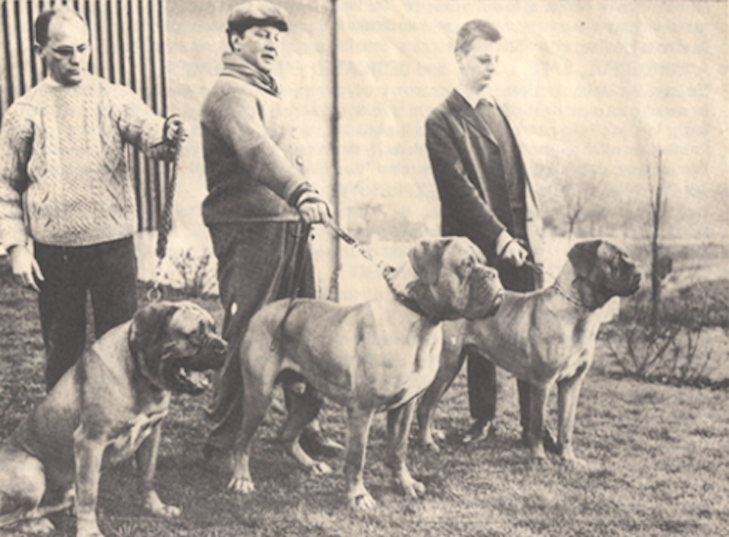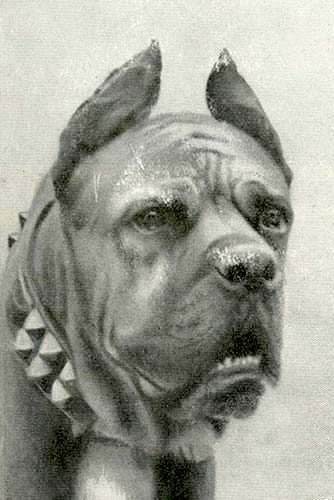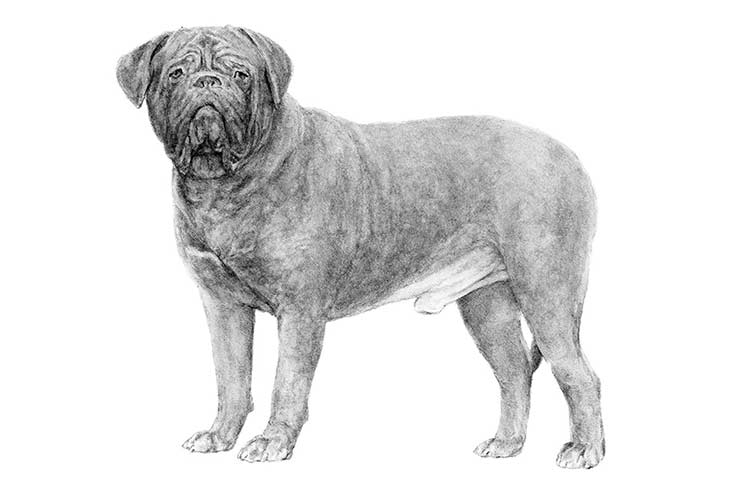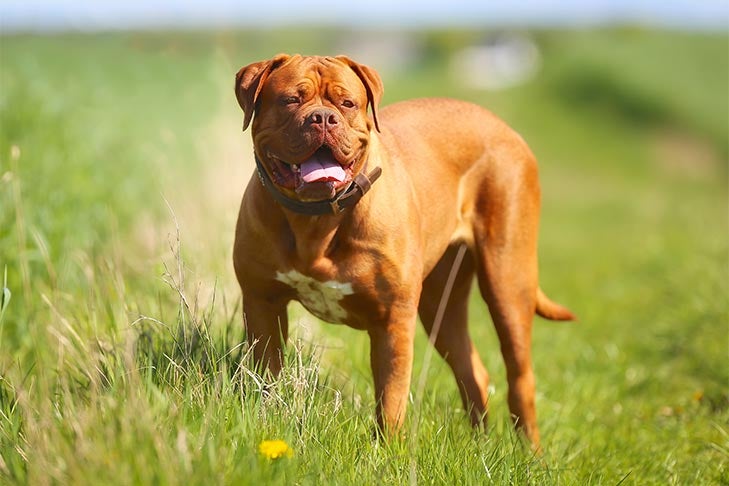
Though we often don’t think about them in this way, dogs are really about people — those long-ago (or, sometimes, not so long-ago) figures who developed particular breeds for particular tasks. Some breeds — like the Doberman Pinscher, Teddy Roosevelt Terrier, and Cesky Terrier — owe their existence to just one visionary person. Other breeds were brought into being by specific cultures or classes of people.
If civilization is the intersection of a group of people with their environment, so too are their dogs: With coats that evolved to survive the local climate, body styles developed to navigate native terrains, and characters that fit into the social mores of the day, our purebred dogs are living, breathing moments of history, reflections of the far-flung cultures that developed and nurtured them. Through them, we rediscover our globe’s cultural diversity and heritage.
Each week, without even leaving our couches, we travel to a different place and time to meet the people who developed the snoozing bundles of fur at our sides.
***
 If you don’t believe just one person can make a difference, consider the story of the Dogue de Bordeaux.
If you don’t believe just one person can make a difference, consider the story of the Dogue de Bordeaux.
Most Americans learned about this burly, brown-nosed French breed from the 1989 buddy movie “Turner & Hooch.” In it, Tom Hanks plays a police investigator who inherits a Dogue de Bordeaux that is the only witness to a murder he is trying to solve. With his distinctive “sour mug” expression and loving but independent personality, Hooch soon turns the house upside down, with a sizeable spitzing of drool along the way.
“That’s the Hooch dog!” people invariably exclaim when they see a Dogue in the flesh.
But Hollywood was many centuries late in discovering the Dogue de Bordeaux. France’s native mastiff, with its pumpkin-sized head and low-slung body, can trace its root back to the Middle Ages. Used in the hunt of wild game and for protection of hearth and home, the Dogue was a particular favorite of butchers, earning a reputation for ferocity that belied the affection reserved for those he loved and admired.
But by the 1960s, the Dogue de Bordeaux was flirting with extinction, thanks to the ripple effects of World War II, which decimated so many European breeds.
Saving the Majestic Breed

It was around that time that a teacher named Raymond Triquet was introduced to the Dogue de Bordeaux by one of his grammar-school students. When he first saw the old dog, Triquet thought he resembled a lion – heavy boned, with a large head, wide-set eyes and upswept chin that gave him an inscrutable, sphinx-like expression. Captivated, Triquet decided such a majestic creature could not be permitted to die out and became determined to help revive it.
It made an interesting pairing – the slight, bespectacled schoolteacher, and the stocky, serious-faced mastiff. But in their intersection, the two brought out each other’s tenacity and tenderness, respectively.
By that point, there were only two breeders were left in all of France. Neither liked the other, which meant, fortunately, that they had not bred their dogs together.
Triquet purchased a female from one breeder, and then mated her a male belonging to the other. On in years and never bred before, the old stud dog managed to produce puppies before dying soon after. In the resulting litter, there was one stand-out male, but according to the breeding agreement, the stud-dog owner had first pick – and that puppy was clearly the best.
When the stud-dog owner arrived to pick up his puppy after traveling clear across France, Triquet asked if he was planning on keeping it for himself. No, the man replied, he would be selling the puppy. And so Triquet pleaded his case: He intended to travel across Europe with the dog to reintroduce the breed to the international dog community. Would the man choose another?
Graciously, he did, and so Triquet kept the wriggly brown-nosed puppy.
Mowgli
That dog, Mowgli de la Maison des Arbres, did indeed become the critical ambassador to the breed that put the Dogue de Bordeaux back on the map. Triquet wrote the definitive book on the breed, the impossibly thick and aptly named “Saga of the Dogue de Bordeaux.” In it, he explained all the intricacies of the breed, from the presence of black-nosed Dogues (often mistaken for Bullmastiffs by the uninitiated) to the tendency of equally uneducated breeders to amplify the breed’s Bulldog tendencies, resulting in overdone “gargoyles” dripping in wrinkles worthy of a Neapolitan Mastiff.
At one dog show, an elderly man approached Triquet, visibly moved. During World War II, the man had been a whipper-in, or huntsman’s assistant, at a hunting lodge owned by an Englishman. He had hunted deer and boars with the Dogues in the forest, cared for them, and of course grew to love them.
In 1940, with occupying German troops closing in, the owner shot all his horses and dogs, and returned home to England.
For the old man, all that remained was that final, heart-breaking image of the executed pack, and he resigned himself to the fact that he would never see a Dogue de Bordeaux again. And yet here was Mowgli, an unexpected reincarnation of the athletic and touchingly loyal dogs that had made such an impression on him decades before.

The Father of the Breed
Triquet’s involvement with the Dogue de Bordeaux did not end there. In the 1970s, he wrote the first modern standard for the breed, an amazingly complex document that translated the distinctive head of the Dogue into geometric and mathematical terms, from its trapezoidal shape to its impressively large size, with its circumference in males equal to the dog’s height. That document has been revised once – again, by Triquet – to address what he calls “monsters,” or Dogues that are so exaggerated and over wrinkled as to render them incapable of being the kind of athlete that would allow them to dash through French forests in pursuit of game.
When the Dogue de Bordeaux was finally recognized in the United States in 2007, Triquet collaborated on the AKC standard, ensuring that the breed would stay the same on both sides of the Atlantic. And as a longtime member of the standard committee of the FCI – sort of Europe’s answer to the AKC – he has translated and helped write many standards for breeds, earning him the nickname “Monsieur Standard.”
In Dogues de Bordeaux, however, he has a different moniker: Simply, the father of the breed.
In so many other breeds, pioneers such as Triquet often become prophets unhonored in their own hand, usurped and marginalized by newcomers who think they know better. But as the exception that proves the rule, Triquet is as revered today as ever. In his mid-90s, he is still active in the dog world, and still sought after for his opinion.
Triquet is as revered today as ever. In his mid-90s, he is still active in the dog world, and still sought after for his opinion.
Perhaps his greatest triumph was sitting in the judges’ gallery during the World Dog Show in Paris in 2011 and seeing the Dogue de Bordeaux win Best French Bred in Show – something that would have been unthinkable a half-century ago.

Today’s Dogue de Bordeaux
Today, it’s easy to gloss over those bleak postwar years, when the script for the Dogue de Bordeaux was verging toward the tear-jerker ending of “Turner and Hooch.” But now the Dogue has traveled the world, with champions in every major country where dog shows are held, and countless more lying in snoozing contended piles at their owners’ feet.
And none of that would have been possible without the breed’s first and most influential champion – the indefatigable Professor Raymond Triquet.

